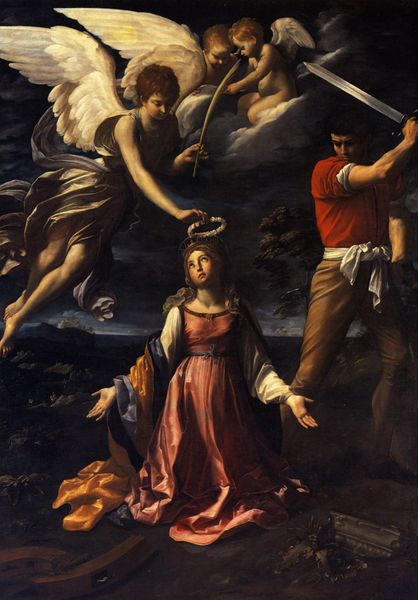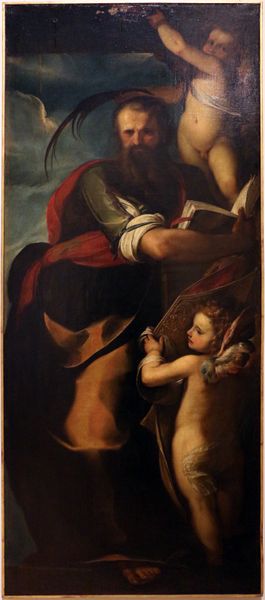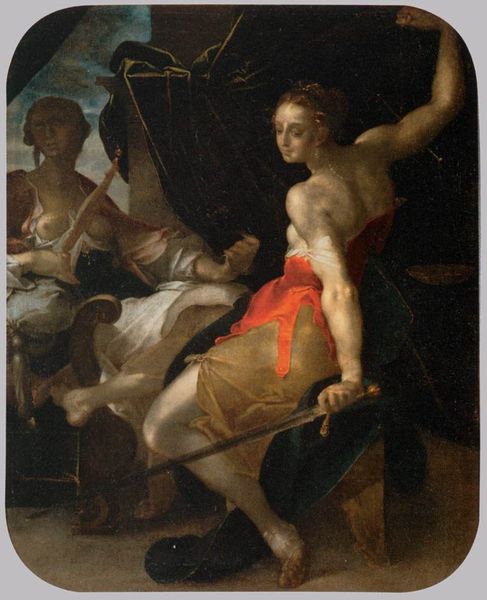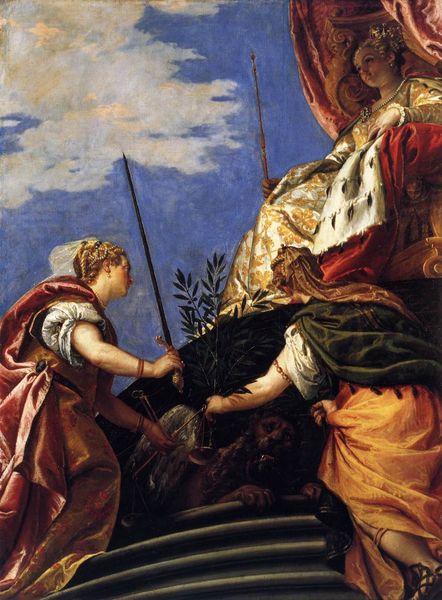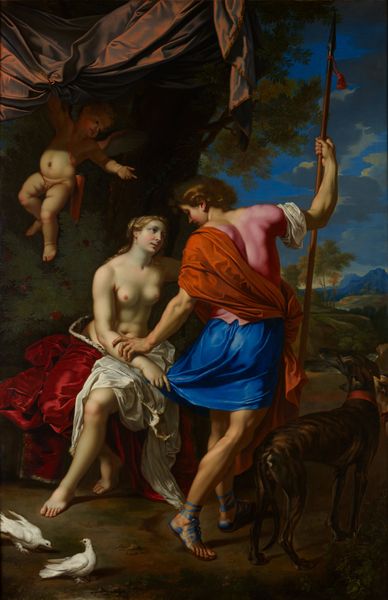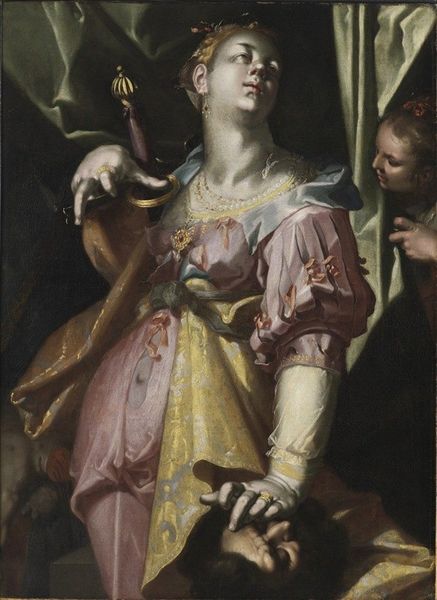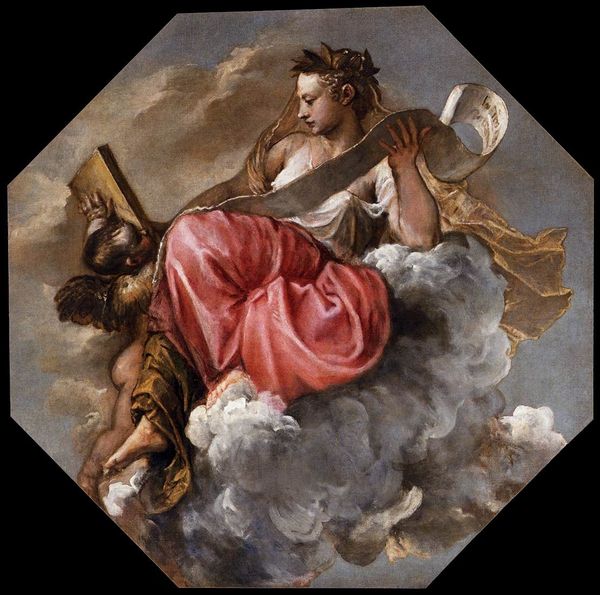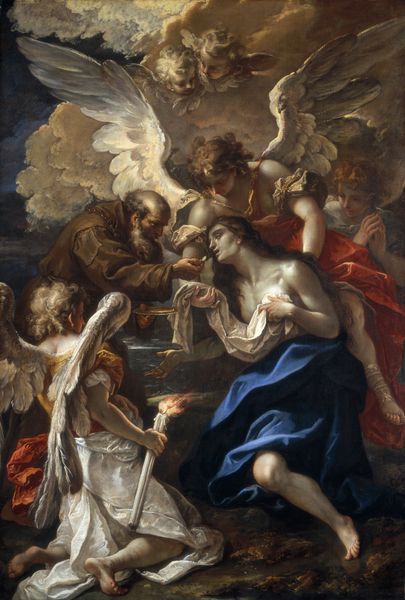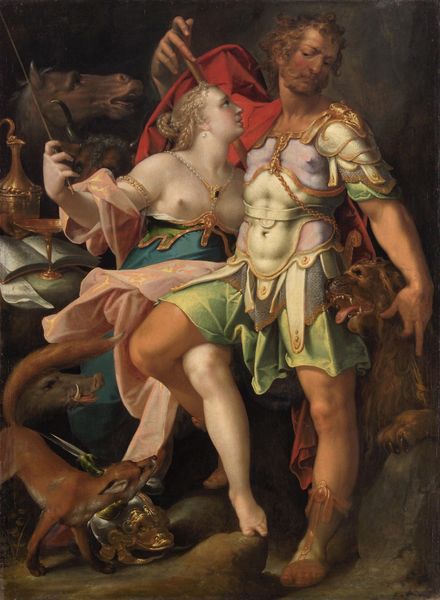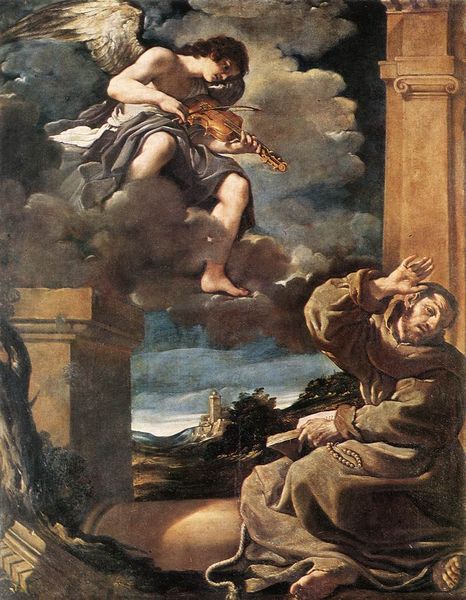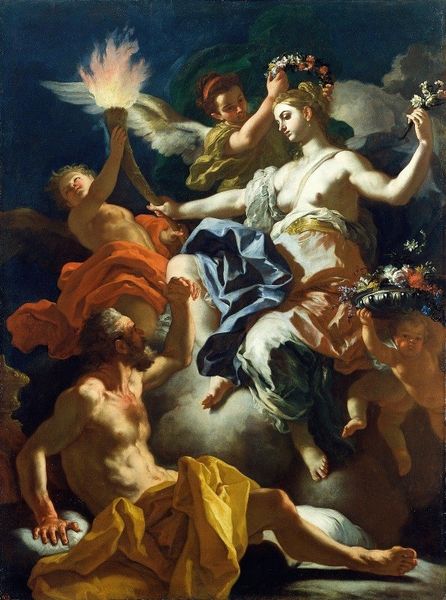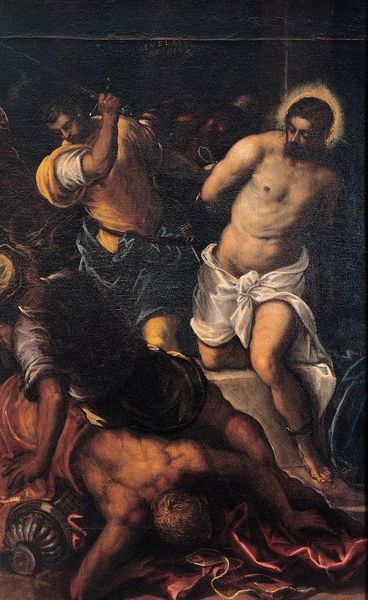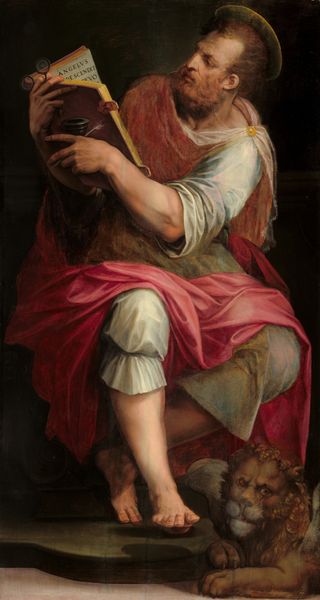
painting, oil-paint
#
portrait
#
narrative-art
#
baroque
#
painting
#
oil-paint
#
figuration
#
chiaroscuro
#
history-painting
Copyright: Public domain
Giulio Cesare Procaccini painted ‘Giuditta e Oloferne’ during a time when the status and representation of women was being renegotiated in art. This artwork depicts Judith, a biblical heroine, who seduces and then beheads the Assyrian general Holofernes to save her city from invasion. Procaccini portrays Judith as a figure of strength and resolve, embodying the agency that was often denied to women in the 16th and 17th centuries. The painting does not shy away from the gruesome details of the story, emphasizing the violence of Judith's act, yet it does so with a certain aesthetic detachment, inviting viewers to contemplate the moral complexities of her deed. This representation offers a counter-narrative to the typical passive or idealized female figures common in art at the time. Judith's act of resistance can be seen as a powerful statement about female empowerment in the face of patriarchal oppression. It's a reflection on the burden and the glory of female strength, asking us to consider the circumstances under which violence can be seen as a form of liberation.
Comments
No comments
Be the first to comment and join the conversation on the ultimate creative platform.
